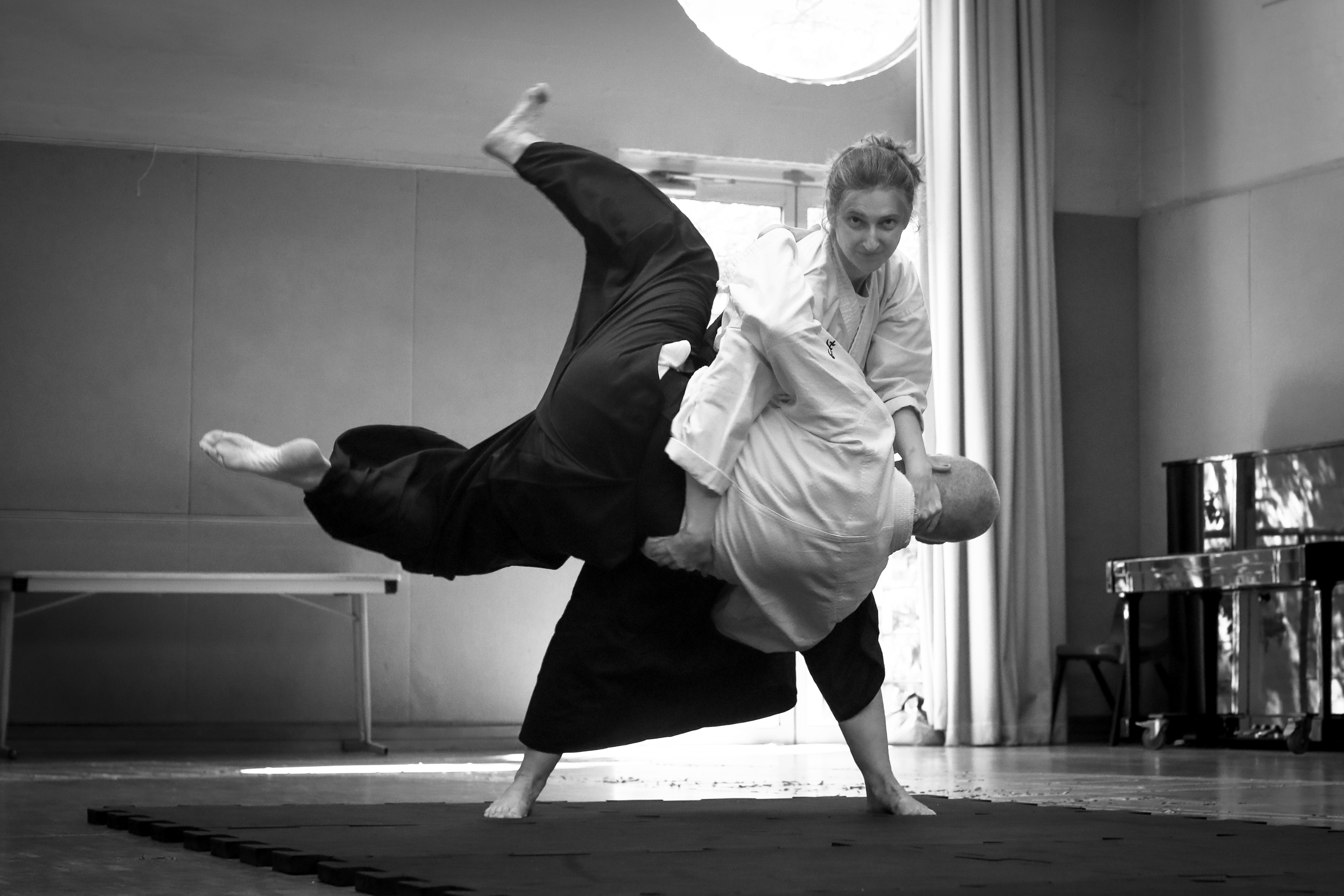 Solo training is not a new idea in aikido, when you think of all the taiso at the start of class and the weapons kata there is plenty of it. But what is relatively new (well what’s old is new anyway) is the idea of purpose behind solo training.
Solo training is not a new idea in aikido, when you think of all the taiso at the start of class and the weapons kata there is plenty of it. But what is relatively new (well what’s old is new anyway) is the idea of purpose behind solo training.
“Your aikido will only improve when your concept of aikido improves”
Kenjiro Yoshigasaki
Founder Ki Society Internationale
Any new idea is helpful and the idea of a purpose for solo training as new concept is something that can enrich our aikido practice. Aikido is often included in the list of internal martial arts, particularly those from China. These arts are by and large solo arts and at the interface between these arts the advantages and disadvantages of paired practice of aikido is laid bare somewhat. Local aikidoka doing these solo arts have had some terrific development in their aikido as a result, though it takes some time to integrate and in the short term has led to awkward aiki at times and some disruption to the dojo pedagogy.
So along comes the internal strength movement in the aikido circles, clearly its a new concept , or at least new packaging on elements that are already in our art. The premesis is that we need to understand our own bodys, how they move and generate and recieve power before we can hope to apply that in two person practice. And indeed it would seem to be the case, though only through paired practice can this be learnt and expressed. In this then we see that aikido kata are examples of aiki rather than the definitive set of ‘aiki’
” they see the kata as the art itself instead of a sophisticated teaching tool that is only a surface reflection of an arts core concepts” Yukiyoshi Takumura, Soke Takumara-ha Shindo Yoshin Kai http://www.advdojo.org/shuhari.html
Books like Ellis Amdurs “Hidden in Plain Sight” and “Transparent Power” on the life of a Ueshiba contempory, namely Yukiyoshi Sagawa point the way to solo training as being valuable and an integral part of the founders aiki abilities.
So where does that leave AIkido Yuishinkai? Through the window of a recent internal strength seminar and interaction with others in this movement in and outside our school does it become clear that we have this method built into our art.
Maruyama Sensei has been teaching for years through his 10 basic forms and his tanden ball exercises much that we see in the internal strength movement, its just that we didn’t recognise it. Here are Okajima sensei’s (Maruyama Sensei’s successor) exercises we saw in Japan almost a decade ago and more recently in Australia at his first international seminar. Catherine Schnell sensei captured these then and the review of them continues to shed light..
Here we see exercises reminiscent of the wave in Systema, the centring exercises that are a precursor for reeling and winding in many of the chinese martial arts and strongly reminiscence of the exercises in the Dan Harden bodywork seminars (from what we can gather), the universal exercises of Mike Sigman’s method. Through the various testing methedologies for movement and partner feedback we see the Ki Society methods now as a tool, rather than egoic practice to reinforce the status quo or worse a tangent to the etherial adn intangaable (at least in this moment of time anyway). We see shades of theopening and closing of the creases that Bill Gleeson Shihan often talks about
Further sharing this through the Yuishinkai community Mike Haft Sensei from the UK shares with stunning clarity here are the ‘rites of spring exercises he has been doing for 10years, through the Hikitsuki Sensei that O’Sensei reportly practiced for more than an hour every day.
Mike writes
The first exercise of the Rites of Spring is Shinkokyu which is almost identical to Okajima Sensei’s first exerecise he demonstrates in the video, the difference being that there are four claps when hands are held aloft in the Rites of Spring. Also I don’t think there’s so much leaning forwards in the RoS as Okajima Sensei does.
The third exercise in the RoS is Furu Tama which is very similar to Okajima Sensei’s third exercise, but not quite the same.O Sensei’s stuff is clearly shinto and shingon buddhism influenced, but I’d bet that if Okajima Sensei’s exercises are DR derived then they contain some overlap. Apparently O Sensei would do practise the RoS daily from anything like several minutes to several hours.
Recentky Stan Pranin shared O’Sensei’s warmup exercises…where you can see some of these in action
http://store.aikidojournal.com/morito-suganuma-o-senseis-warmups-alive-and-well/
So what its taken to get to this point, here at the beginning of the importance of solo practice. This slow learner, by way of the scientific method, likes to know the what and how, rather than just do and copy. The former being the pedagogy of western science and the latter the observational basis that is eastern science. Everything has advantages and disadvantages. But whats most important is here is something new (thats not new) , something to chew on and reinvigirate/reinterpret everything that Maruyama Sensei has been teaching for years but with now an understanding of the purpose and a critical eye that can help cut to some core emelments of the practice.

3 comments for “Solo training in Aikido”